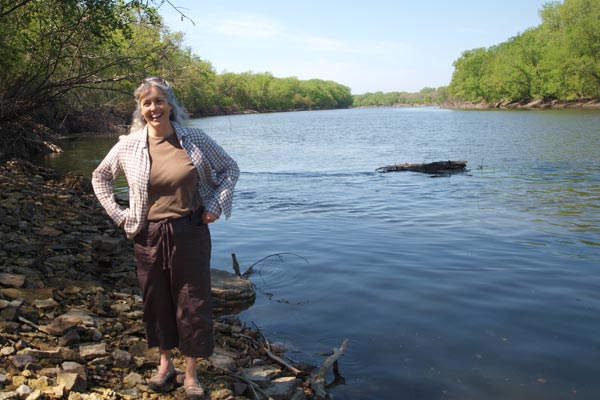Dr. Carrie Jennings
Glacial Geologist, Minnesota Department of Natural Resources
“Geologists commonly say that no one goes to college to study geology,” says Carrie Jennings, a glacial geologist for the Minnesota Department of Natural Resources (DNR) in the Division of Lands and Minerals. Originally, Jennings went off to Northwestern University of Evanston, Illinois to be a professional clarinet player only to take a science class as part of her liberal arts education and discovering she really liked the subject. Carrie admits she always liked science but never thought she was good at it. “In 7th grade I took one of those crazy career tests that said I would either be a forester or a hair dresser. Science just wasn’t a natural thing for me to want to do and I did it kinda of kicking and screaming through college.”
Jennings became a glacial geologist after deciding to go to Alaska for her mandatory six weeks of field camp (this is required for all geologists to learn geology mapping). Walking on a glacier got her interested in this specific type of geology. Today, her research interests are glacial geology - the deposits of landforms created by glaciers and glaciology - the study of the physics of ice movement. Considered one of the experts in this field, Carrie applied her knowledge of the distribution of glacial sediment in Minnesota (as well as the history of landscape and river evolution) to better define sources of sediment to modern river systems of the state, most notably, the Minnesota River and its tributaries.
Before going to work for the DNR in spring 2012, Carrie Jennings worked twenty-one years for the Minnesota Geological Survey doing the same thing - glacial mapping. She received her PhD in 1996 from the University of Minnesota. “I started to work there with their geological survey doing the mapping and that was the most natural way to explore and ask questions,” reports Jennings. I think that is what I like my days to be filled with, exploring new things, places or topics and figuring out the answers. It is like solving a mystery.”
“The Minnesota River flows down the centerline of the broad glacial trough formed by ice of the Des Moines lobe, which dominates the topography of the southern half of Minnesota. This trough is so wide and gently-sloping that it is almost undetectable from the ground. The valley of the Minnesota River, on the other hand, is an arresting feature that was created abruptly after the Des Moines lobe retreated and is still affecting the evolution of the landscape today.”
VIDEOS
What is the coolest creature that you have seen in the Minnesota River Basin (Dr. Carrie Jennings)?
What are the top three water quality problems in the Minnesota River Basin (Dr. Carrie Jennings)?
What is your most memorable experience in the Minnesota River Basin (Dr. Carrie Jennings)?




